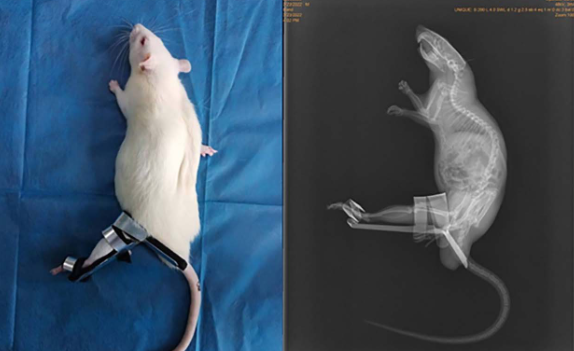Possible mechanism of static progressive stretching combined with extracorporeal shock wave therapy in reducing knee joint contracture in rats based on MAPK/ERK pathway
DOI:
https://doi.org/10.17305/bjbms.2022.8152Keywords:
joint contracture, joint capsule, static progressive stretching, extracorporeal shock wave therapy, MAPK/ERK pathwayAbstract
The study aimed to observe the therapeutic effect of static progressive stretching (SPS) combined with extracorporeal shock wave therapy (ESWT) on extension knee joint contracture in rats and the effect on the mitogen-activated protein kinase (MAPK)/extracellular signal-regulated kinase (ERK) pathway in the development of joint capsule fibrosis. Thirty-six Sprague Dawley rats were randomly divided into blank control group, immobilization model group, natural recovery group, ESWT intervention group, SPS intervention group, and SPS combined with ESWT intervention group. The left knee joints of the rats, except for the control group, were fixed with an external fixation brace for four weeks at full extension to form joint contractures. The therapeutic effect of each intervention was assessed by evaluating total and arthrogenic contracture, the number of total cells and collagen deposition in the anterior joint capsule, the protein levels of TGF-β1, FGF-2, and ERK2 in the anterior joint capsule, the mean optical density of upstream RAS and downstream ERK2 positive expression in the MAPK/ERK pathway. SPS in combination with ESWT was more effective in relieving joint contracture, improving the histopathological changes in the anterior joint capsule, and suppressing the high expression of target proteins and the overactivated MAPK/ERK pathway. The overactivated MAPK/ERK pathway was involved in the formation of extension knee joint contracture in rats. SPS in combination with ESWT was effective in relieving joint contracture and fibrosis of joint capsule. Moreover, the inhibition of the overactivated MAPK/ERK pathway may be the potential molecular mechanism for its therapeutic effect.
Citations
Downloads

Downloads
Additional Files
Published
Issue
Section
Categories
License
Copyright (c) 2022 Run Zhang, Quan-Bing Zhang, Yun Zhou, Rui Zhang, Feng Wang

This work is licensed under a Creative Commons Attribution 4.0 International License.
How to Cite
Accepted 2022-10-09
Published 2023-03-16









